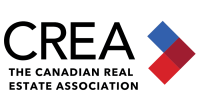
Market Trends
Utilization in Major Markets Inches Up While Vacancies Remain
The arrival of COVID-19 to the U.S. in early 2020 pulled the floor out of the office market, with worker utilization rates dropping from above 90 percent to below 20 percent. But now, according to Kastle System’s Workplace Occupancy Barometer, that figure has topped 40 percent for the first time since the pandemic. But the recovery for office remains a bit muddied, with vacancy rates remaining relatively steady in the past two years.
According to commentary from Moody’s Analytics, metros with higher work-from-home percentages experienced higher vacancy increases from the end of 2019 to the end of 2021. As workers return to offices, the report states, tenants may significantly reduce space if many are only partially working in person. Tenants who expect employees to return to the office, meanwhile, may retain space, but these workforces have yet to come back in a major way.
Millions of Dollars Flow into Land Market in the Metaverse
Land has long been considered a finite resource, but new digital frontiers might mean new horizons for commercial real estate. The metaverse is attracting hundreds of millions of dollars in land buys. CNBC estimates more than $500 million in sales in 2021, with that figure expected to top $1 billion this year.
Earlier this year, Metaverse Group spent the cryptocurrency equivalent of $2.43 million on a tract of land in Decentraland, an online, virtual-only environment. According to Connect CRE, large corporate buyers are investing six and seven figures in these “properties,” with purchasers including PricewaterhouseCoopers, HBSC, and Adidas.
While the transactions refer to mortgages and land rights, some analysts frame them as closer to cryptocurrency than traditional land investments, according to Business Insider. Corporations may be looking to get into the metaverse to build brand awareness.
Luxury Brands Aim to Strengthen Through 2020s
After global luxury brands weathered a difficult 2020, with fashion markets falling by 12.6 percent, or $28 billion, total sales of luxury fashion goods topped 2019 levels by $6.7 billion in 2021 and $15.6 billion in 2022, according to Colliers. The U.S. rang up a total of $63.3 billion in 2021, compared to $53.6 billion in 2020 and $64.5 billion in 2019.
China’s growth in consumer spending will mean a boost in demand for luxury brands — including Chanel, Estée Lauder, and prominent jewelers — with the Asian giant’s piece of the global market increasing from 18.9 percent in 2019 to 25.1 percent in 2024. Japan will have the second largest bump in consumption in that time frame, increasing 4.5 percent to 22 percent of the world’s total. But the sector will face challenges as many consumers may start to opt for experiences over products. Customer expectations are also evolving, with some people developing preferences for casual clothing over more formal products.
Key Hospitality Metrics All Tick Up in 1Q2022
As an entire sector in 1Q2022, hospitality saw improvement across all major metrics in year-over-year measurements, with mixed results when compared to the first quarter of 2019, before the impact of COVID-19. In year-over-year figures, demand rose 17.2 percent, supply improved by 1.1 percent, occupancy jumped 15.9 percent, average daily rate increased 39.1 percent, and RevPAR increased by 61.3 percent. Compared to 2019, though, demand was down 11 percent, occupancy was lagging 14.2 percent, and RevPAR declined 9.9 percent. ADR was the only major metric to improve since COVID-19, increasing 5 percent from 1Q2019 to 1Q2022.
All major hotel chain sectors saw improved ADR compared to pre-pandemic levels. Midscale and economy chains saw the biggest improvement, up 11 percent, followed by upper midscale (10 percent), upper upscale (9 percent), luxury (6 percent), and upscale (5 percent).
Rent Growth Tapers Entering Busy Summer Months
The multifamily market continues to strengthen, but rents are increasing at a slower rate than 2021. According to Apartment List’s national index, rent increased by 0.9 percent in April. Through the first four months of 2022, rents increased by a total of 2.5 percent. That growth is significantly less than the previous year, with the second half of 2021 accounting for most of the year-over-year growth of 16.3 percent.
Apartment List also reported its vacancy index remained at 4.6 percent, up from a recent low of 3.8 percent in August 2021 — but still well below pre-COVID-19 numbers. In the largest 100 cities in the U.S., 93 markets reported rent increases in April, with Sun Belt, Florida, and Arizona cities seeing the largest increases.
Eminent Domain Lawsuit Could Derail Massive NY Development
The larger a development’s price tag grows, the more potential pitfalls arise to threaten progress. Tritec Real Estate unveiled plans for a $750 million mixed-use development on New York’s Long Island with residential, retail, office, and public use areas. But after completing the first phase in 2020, the developers are facing a lawsuit from North Fork Express, a local charter bus company, over 2.2 acres seized by eminent domain.
Tritec is asking the Brookhaven Town Industrial Development Agency to condemn and seize the depot, which it has done to a handful of other properties, though the developers and North Fork could negotiate a sale of the property, according to the New York tri-state area’s Real Deal. The two parties remain at a standstill, while the project remains on hold. If completed, the development would include 1,500 apartments, 195,000 sf for retail, and 360,000 sf of office space.
New Prologis Metric Cites 16-Month Low in Industrial Supply
The healthy industrial market doesn’t show signs of slowing down heading into the back half of 2022. According to Prologis, rent growth in the sector is expected to top 22 percent, with vacancy rates holding steady at a record low of 3.3 percent. Prologis introduced True Months of Supply, a new metric that compares vacancies in existing facilities and unleased space in the pipeline to net absorption. The TMS, based on data from 30 U.S. markets, is a record-low 16 months, with TMS never dipping below 32 months before 2021.
Researchers cited delays in construction and difficulties in materials as reasons for tapered deliveries and absorption in 1Q2022. The quarter produced 68 msf of new supply, while absorption was lower than expected at 88 msf. Accordingly, Prologis amended its projected total of industrial completions in 2022 to 375 msf. Net absorption will need to reach 360 msf for demand to keep pace with supply.
Big Apple, LA See Boom in Self-Storage Demand
Construction on self-storage is hustling to keep up with surging demand in the New York and Los Angeles metro areas. The two cities top a list of undersupplied markets in the U.S. from Rent Café, with New York (2 sf) and Los Angeles (4 sf) falling well below the national average of 7.1 net rentable sf per person. Almost 12 msf of self-storage is planned or under construction, with Los Angeles accounting for 6.3 msf. Both cities expect 6.2 msf to be completed by the end of this year.
Considering changes in how people use living spaces since the onset of COVID-19, self-storage has seen increased demand that falls outside of the “4Ds” of dislocation, death, divorce, or disaster. Downsizing in residential and office locations has helped increase income for self-storage operators. Overall, rents have increased steadily in the last year, increasing 6 percent year over year in May 2022.






